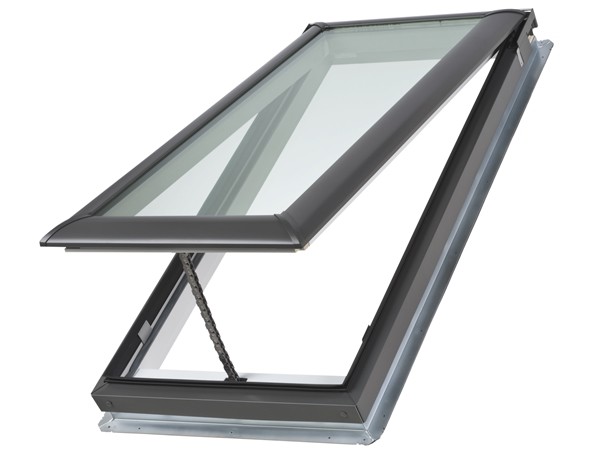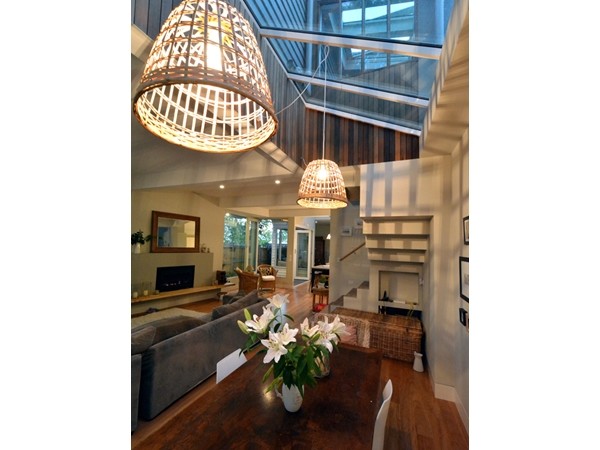Velux VS – Manually Operated skylights offer users the comfort and energy savings of free daylight and natural ventilation. Coming in a choice of eight sizes, its smooth profile sits lower in the roof and does not obstruct the roofline.
The openable skylight from Velux also catches more breeze than a vertical window, and can be operated by a base handle if it is located within reach, or by a telescopic rod for out-of-reach situations (285cm above head height).
Featuring a maximum 5 Stars for the WERS (summer) rating system, the VS skylights meet Australian Standards, and has a U value of 2.50.
It is also solar heat gain co-efficient, with high performance or comfort double glazing on most sides.
The product comes in a white painted interior wood frame and sash, as well as grey outer aluminium cappings. It can also come complete with flashings for corrugation iron or tile roofs.
A pre-installed insect screen adds further value to the skylights, helping to keep mosquitoes and flies out in summer while letting in natural air and light.
For houses that face particularly hot days, Velux also supplies the VS Solar Powered Blockout Blinds, which help occupants control the amount of light and heat that enters the room, using only the power of the sun.

The design of the motorised blinds is operated by a new radio frequency wall-mounted keypad that requires no wiring and no electrician.
The Solar Blinds are available in white, and suitable for both the VS and fixed skylights from Velux.
CASE STUDY: BERLIN HOUSE BY BLOMQUIST + WARK ARCHITECTS

Berlin House by Blomquist + Wark Architects is a good example of a project that has been enhanced by the Velux skylights.
The brief presented to the architects included getting more direct light into the living spaces and new bedrooms. Instead of introducing internal courtyards, the team decided to achieve this aim by installing nine glass skylights from Velux around the house.
The skylights, as well as two glass roofs in the kitchen and dining areas, have created the illusion of more space. Their orientation and locations ensure the majority of the hot afternoon summer sun is kept out, while morning sun penetrates into the living areas and bedrooms upstairs.
Unwanted heat and light is dealt with by the skylights' low e, double glazing. Some of the skylights are motorised so they can be opened to encourage air flow through the house.
Skylights on the north side of the house also feature motorised block out blinds which prevent undesired heat gain, and help the children sleep at night when the moon is out.
“The glass roofs and skylights have transformed the feel of the house, with all the living areas now bathed in natural light, and at particular times of the day, direct sunlight,” says architect Peter Schreuder of Blomquist + Wark.

